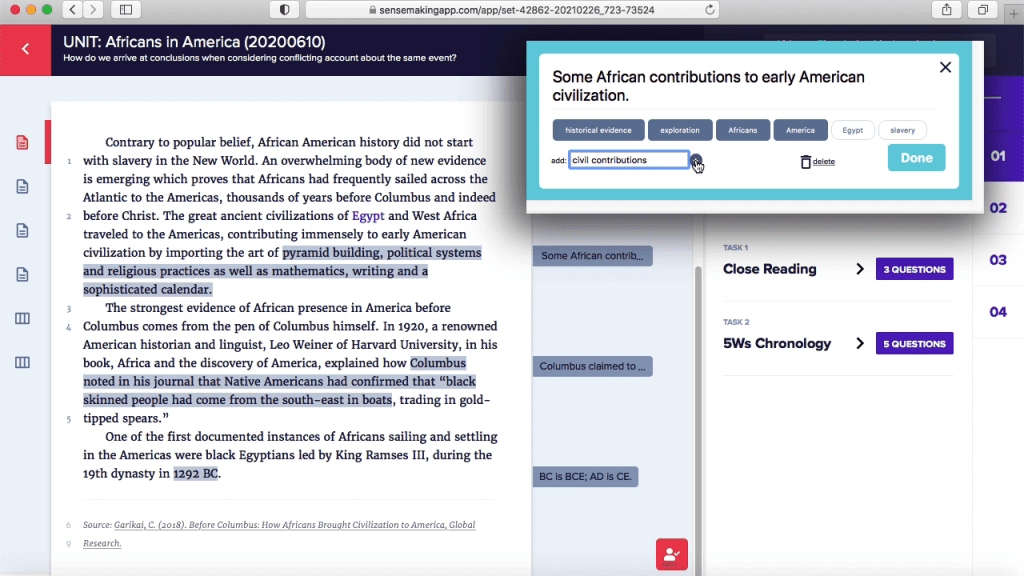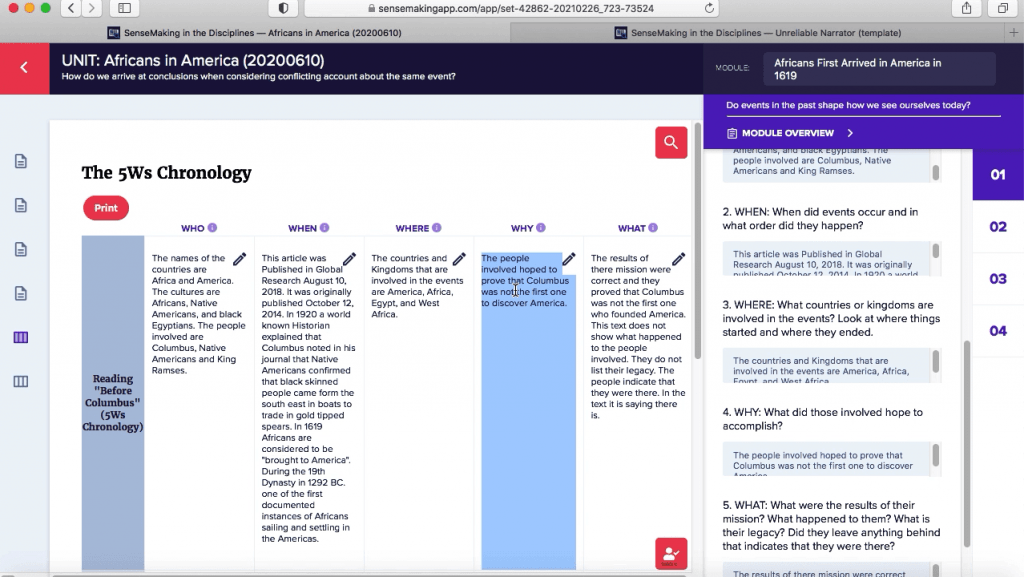Why Reading in the Disciplines?
Why Argumentation?
Common Core Standards and Current Assessments call for students to be able to read critically texts in the content areas. SMD focuses on critical skills required to examine literary and historical (primary and secondary sources) texts. These skills include both generic skills but also discipline specific skills and strategies.
Flexibility of the SMD Tool
SMD is an authoring tool, meaning teachers can create their own content. This includes differentiating texts for students with different reading levels but still interrogating the same substantive content and conceptual challenges. Teachers can also automatically monitor student progress in the system.
SMD Framework
- Focus on essential questions for which there are not simple right or wrong answers.
- Select text sets that provide students’ access to interrogating essential questions.
- During and at the end of units, students engage in dialogic argumentation, creating products representing their claims and evidence.
Design Process
- Analyze sources of text complexity
- Design (using templates provided by the system) organizers with heuristics to guide students’ reasoning
- Identify hyperlinks in texts for prior knowledge and vocabulary
Instructional Practices
Students move from interrogating questions based on close text analyses within the SMD tool and then work outside of the tool in small and whole group dialogic discussions and then to produce written artifacts embodying their arguments.
Testimonials
Sensemaking allowed me to offer controlled support to my students as they negotiated the disciplinary practices associated with Literature.
From a teacher’s perspective, I appreciated the ability to embed hyperlinks that defined key vocabulary/concepts links or provided important contextual information (i.e., author biographies, genre, historical events, etc.). Through patterned questions across sections, students built robust graphic organizers across the text without even realizing it.
I found Sensemaking really lived up to its promise: it provided a dynamic space for students to make sense of and grapple with complex texts.
– Rick Coppola, Chicago Public Schools
About us
SenseMaking in the Disciplines is a literacy project funded by the Institute for Education Sciences to support the continued development of the digital tool SenseMaking in the Disciplines (SMD). SMD is a tool to support close reading and argumentation in the disciplines of literature and history. SMD is also an authoring tool, meaning teachers can input their own texts and content. We have several demonstration units available for review.
SMD was originally developed under a previous IES grant as part of Project READI (www.projectreadi.org) . Under the current funding, we have further refined the tool and are currently field testing in middle and high school classrooms.
SMD is designed as a digital tool to be integrated into a larger pedagogical framework for teaching reading comprehension and argumentation in the academic disciplines.
Project Team
The SMD Project is led by nationally recognized education researchers, literacy specialists, and software designers.
- Dr. Carol D. Lee, Professor Emeritus Northwestern University
- Dr. Susan Goldman, Professor of Learning Sciences, Department of Psychology and Department of Education, and Co-Director of the Learning Sciences Research Institute, University of Illinois at Chicago
- Dr. James Buell, Project Manager
- Adria Carrington, History Consultant
The SMD Software was designed and produced by Dr. Matthew Brown and Dr. Ben Loh of Inquirium.





